Chapter 4 Completing the Accounting Cycle — Preparation

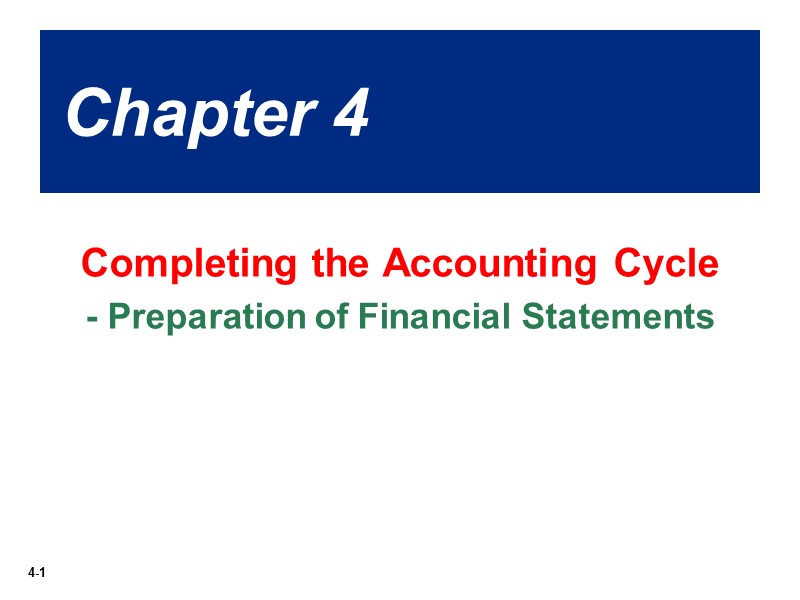

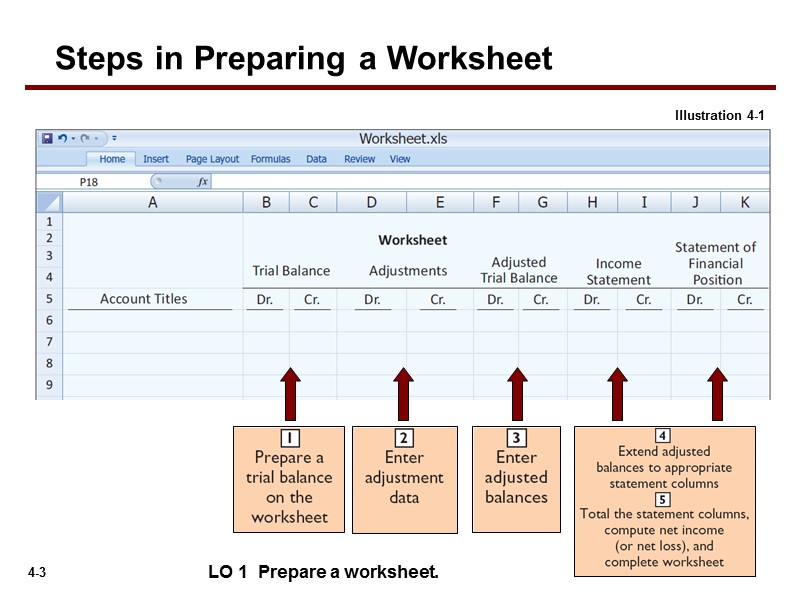
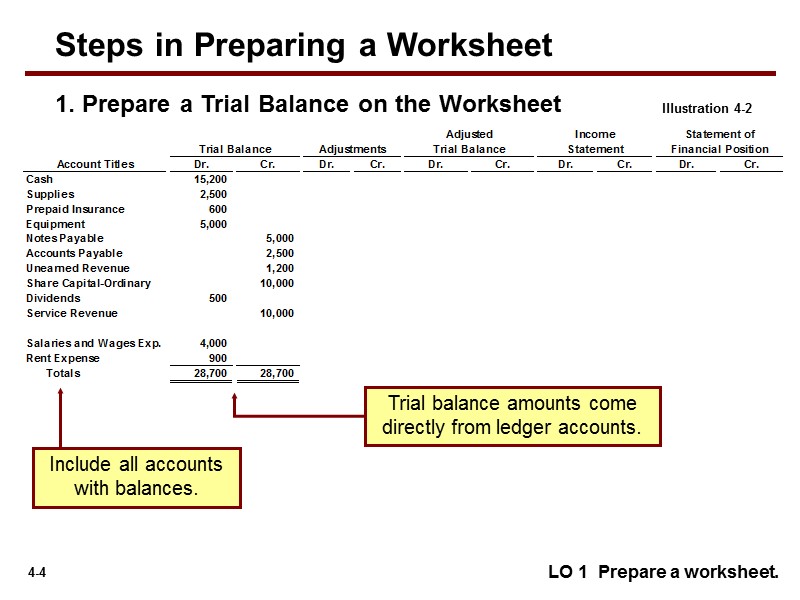
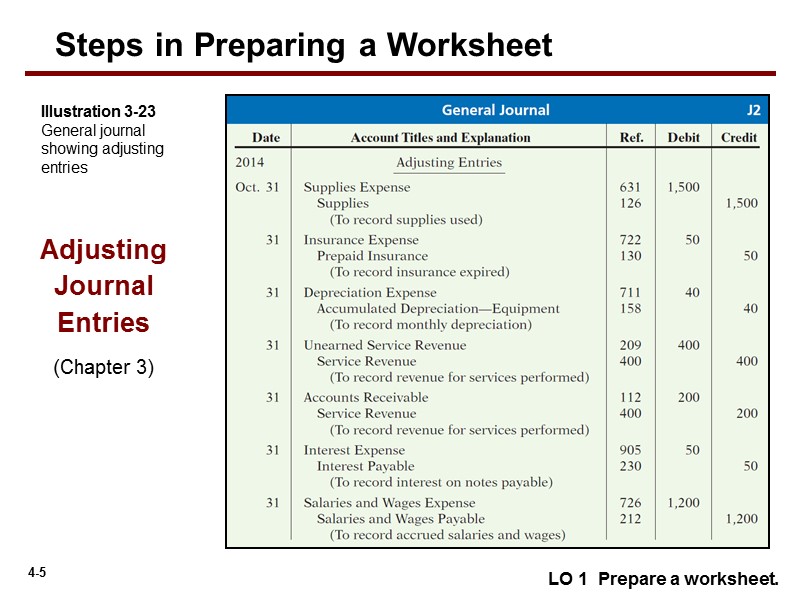
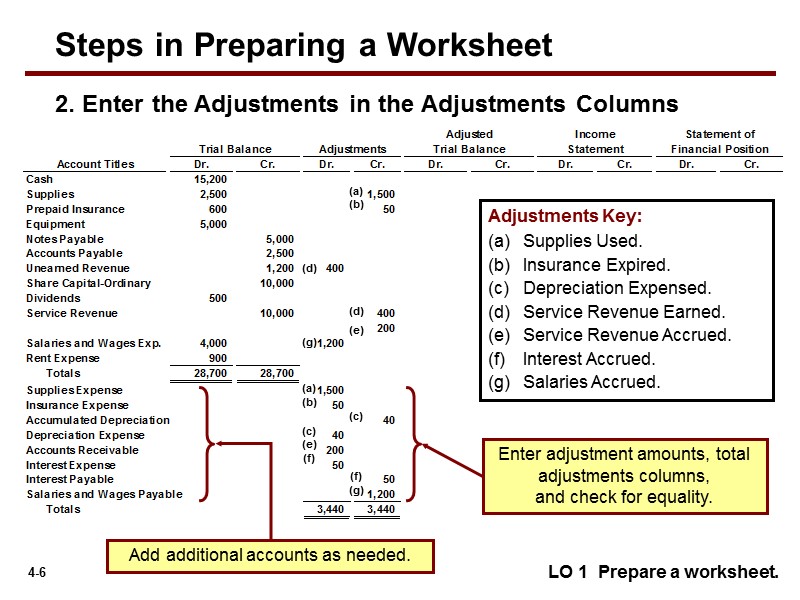
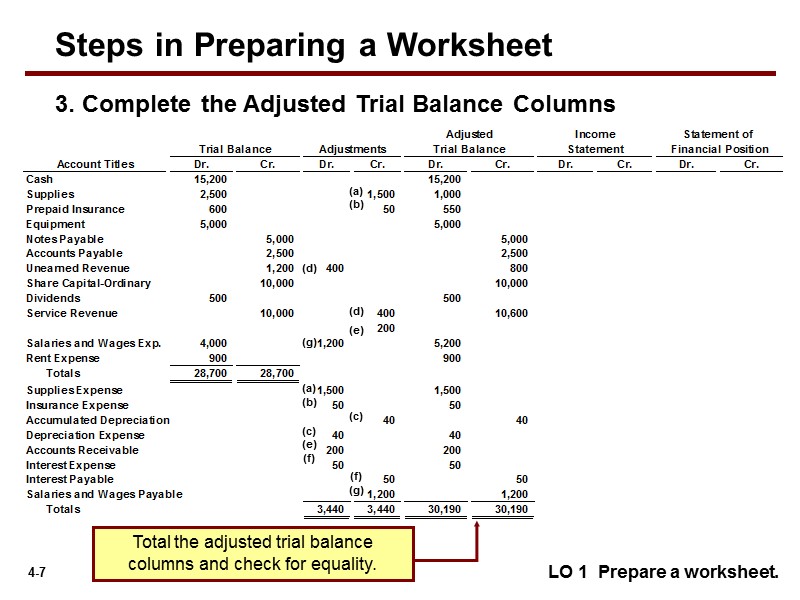
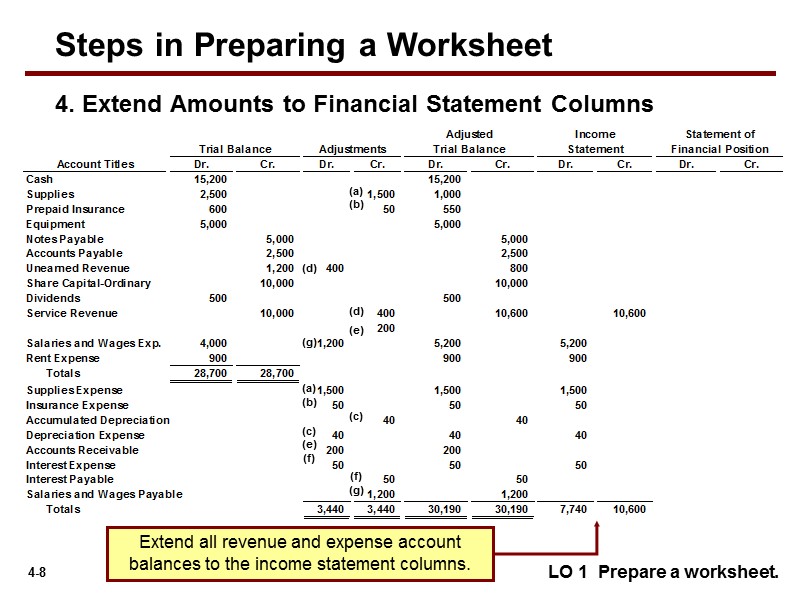
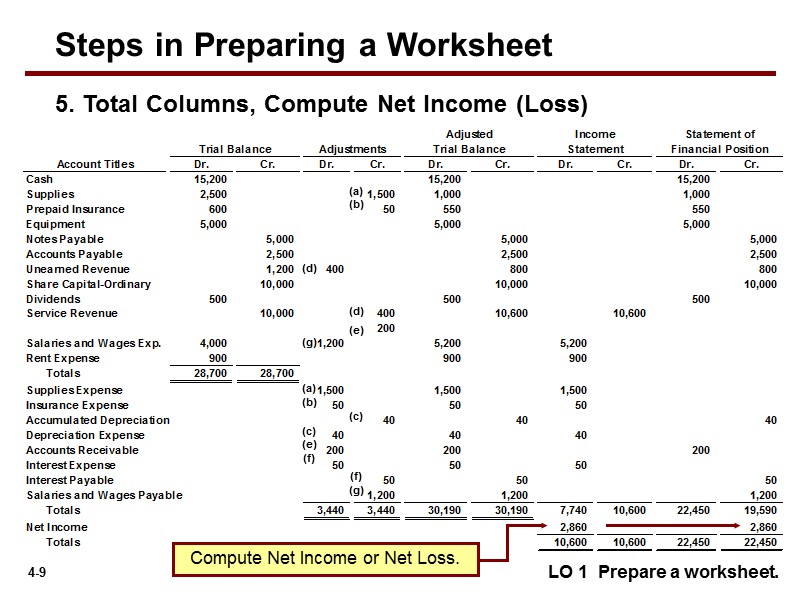
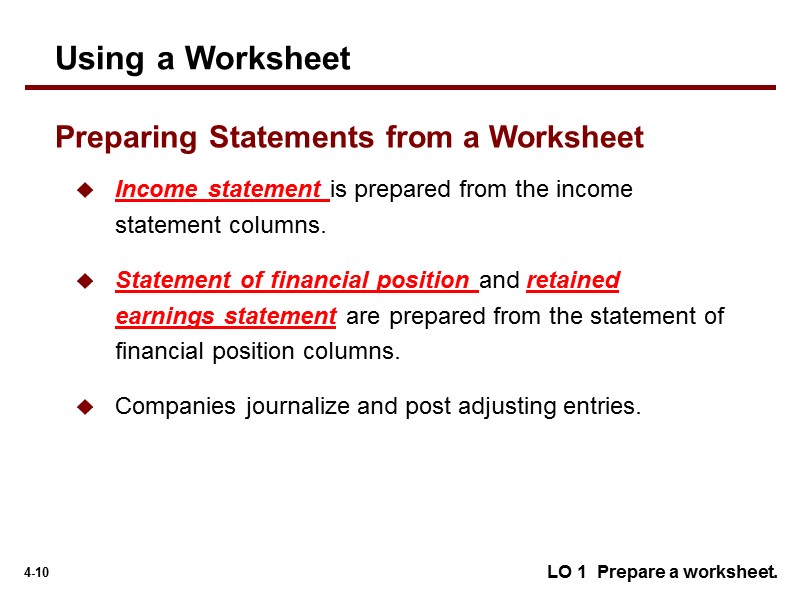
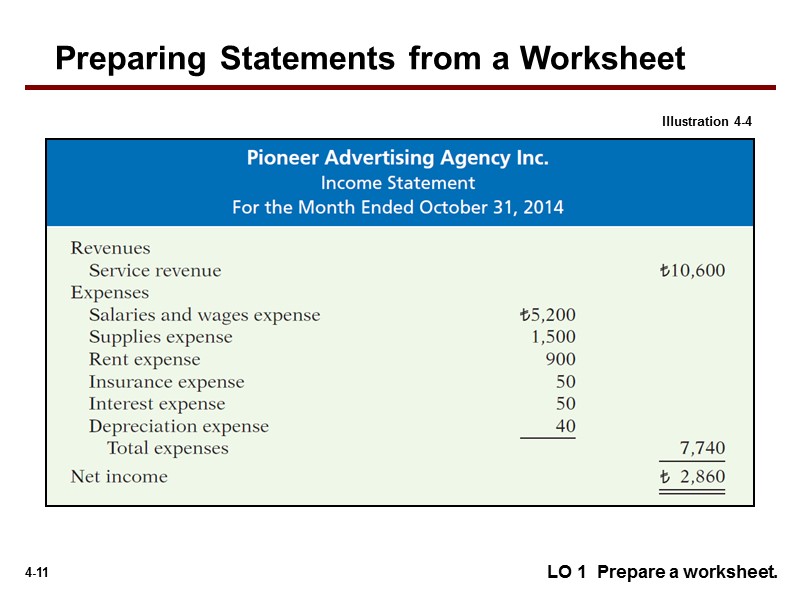
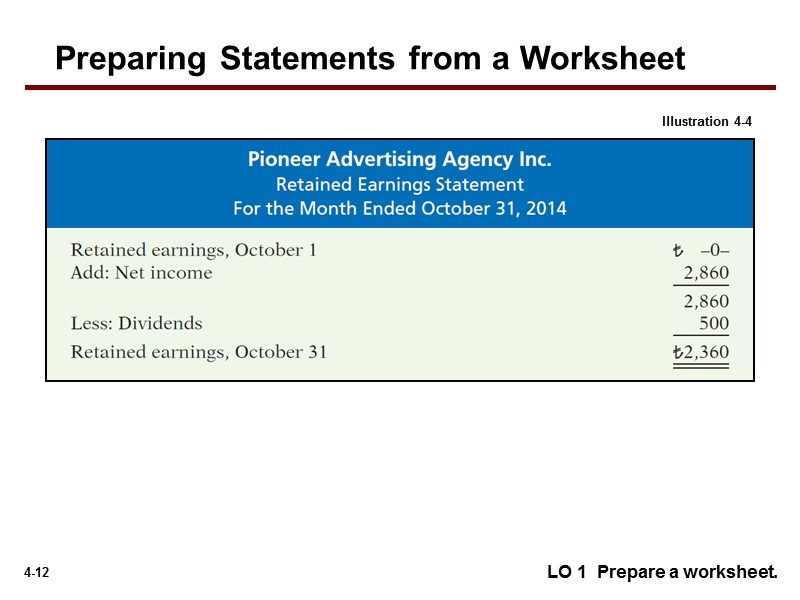
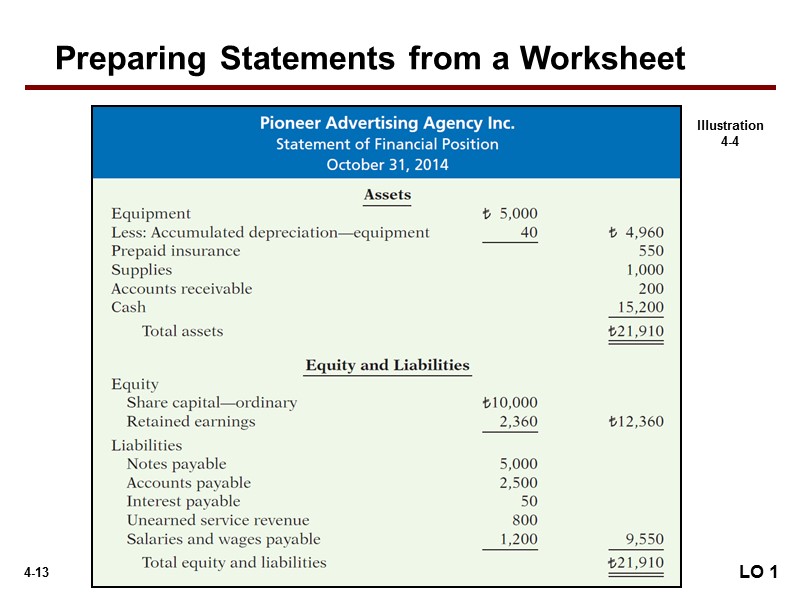
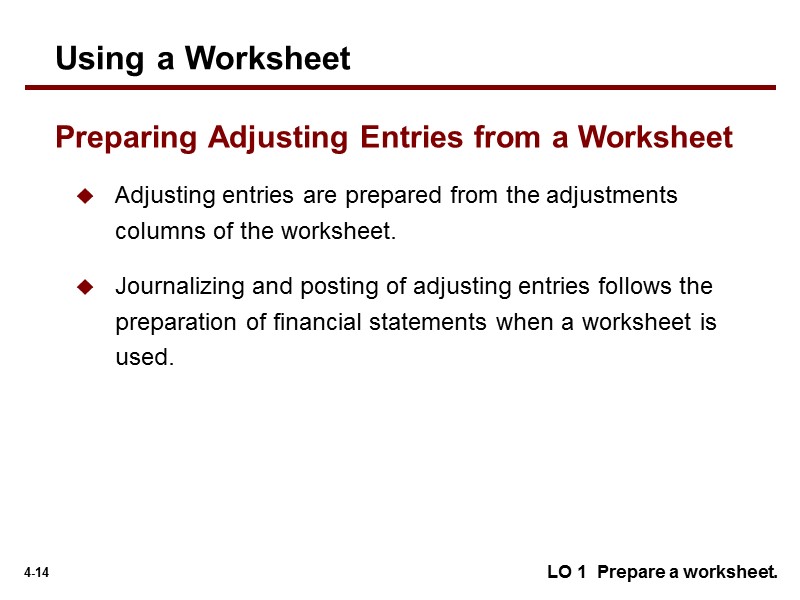
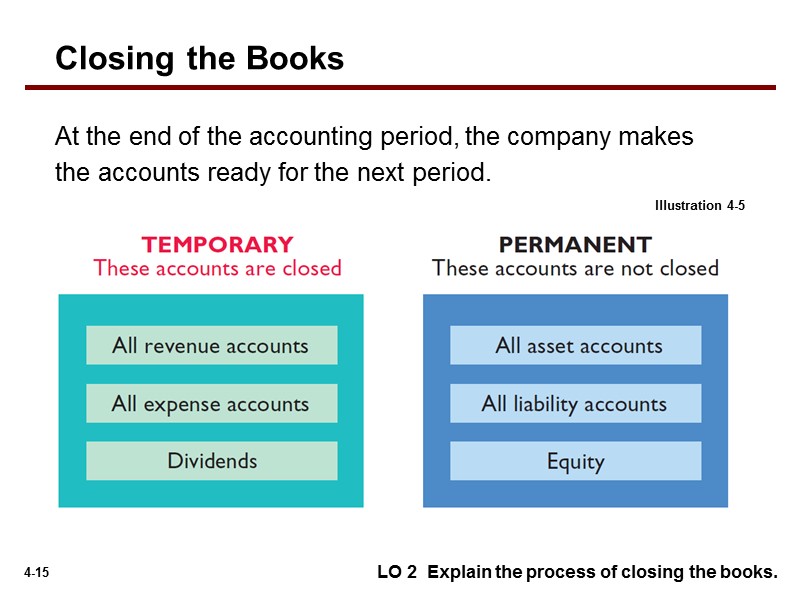
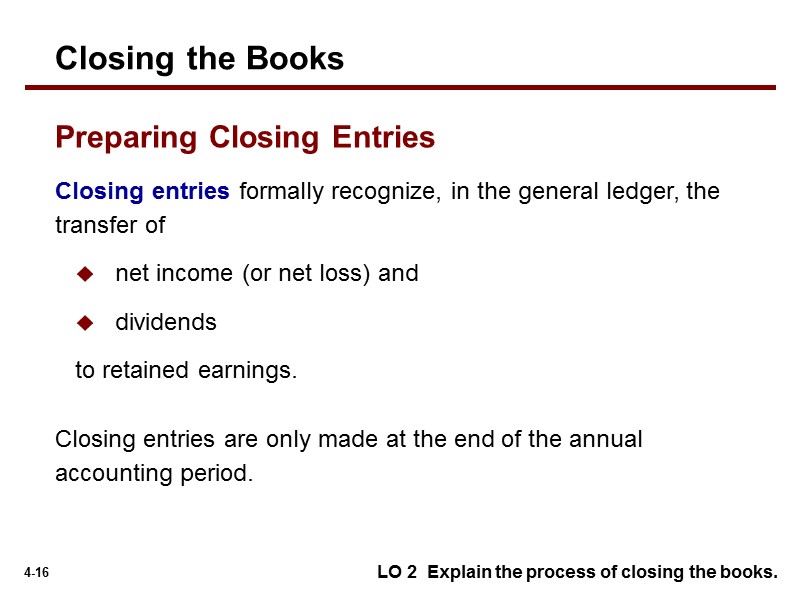
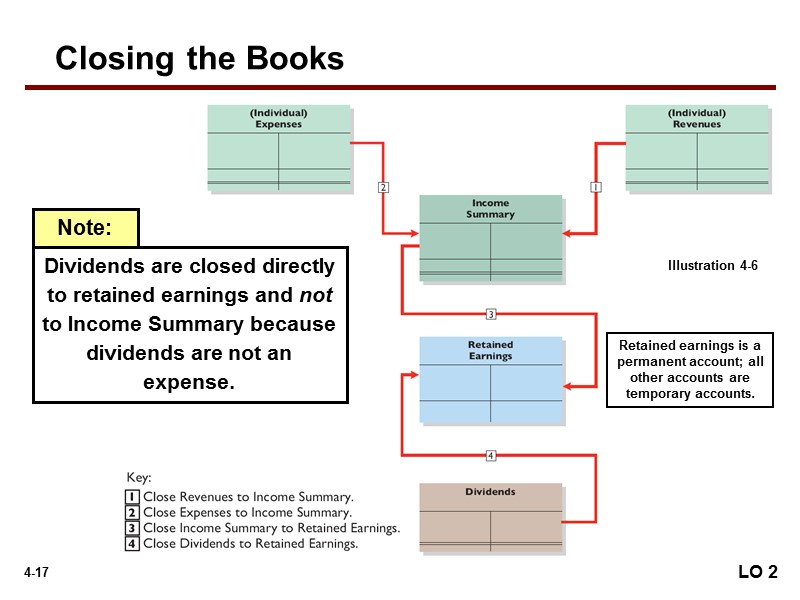
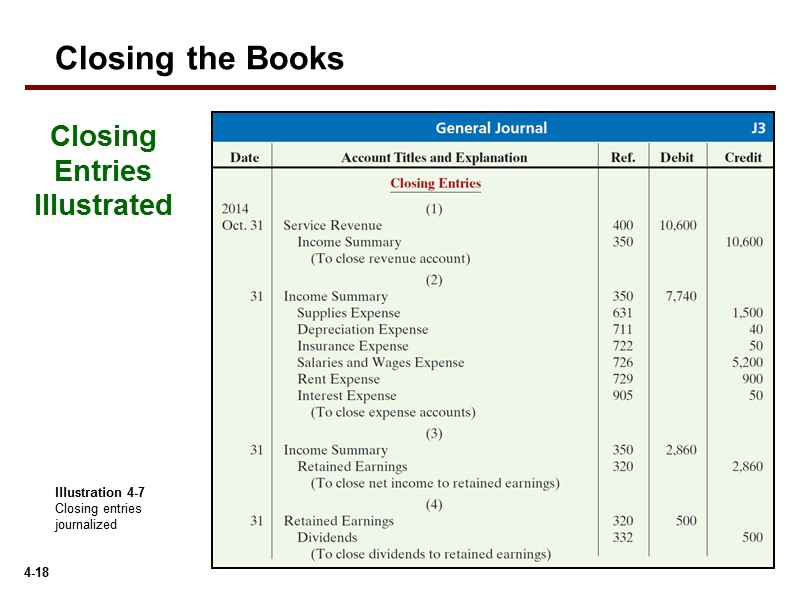
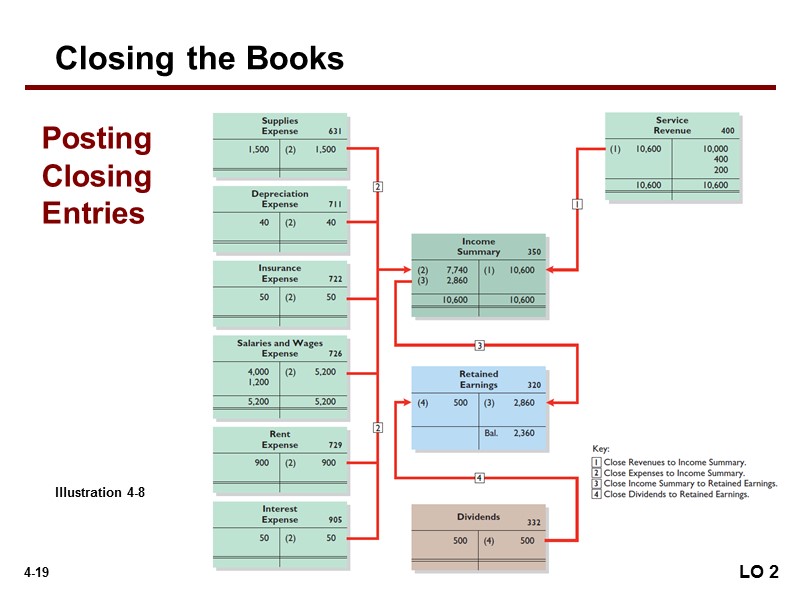
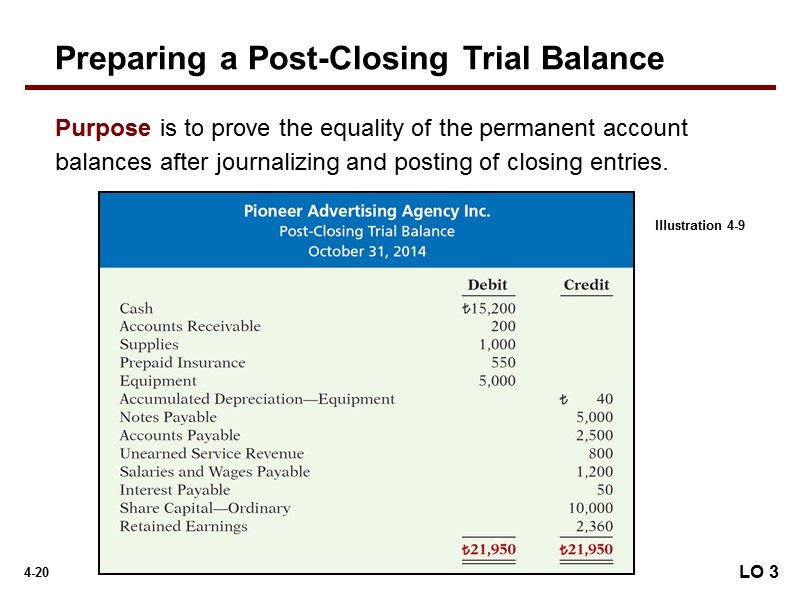
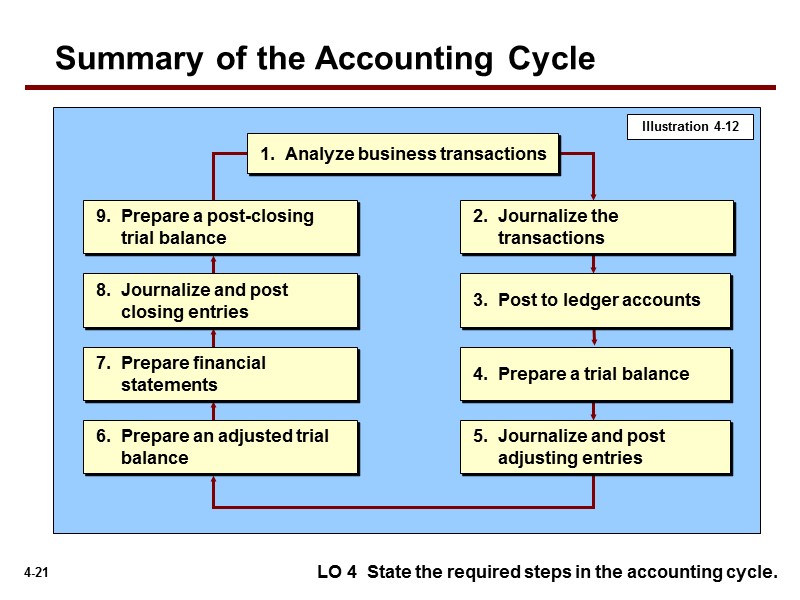

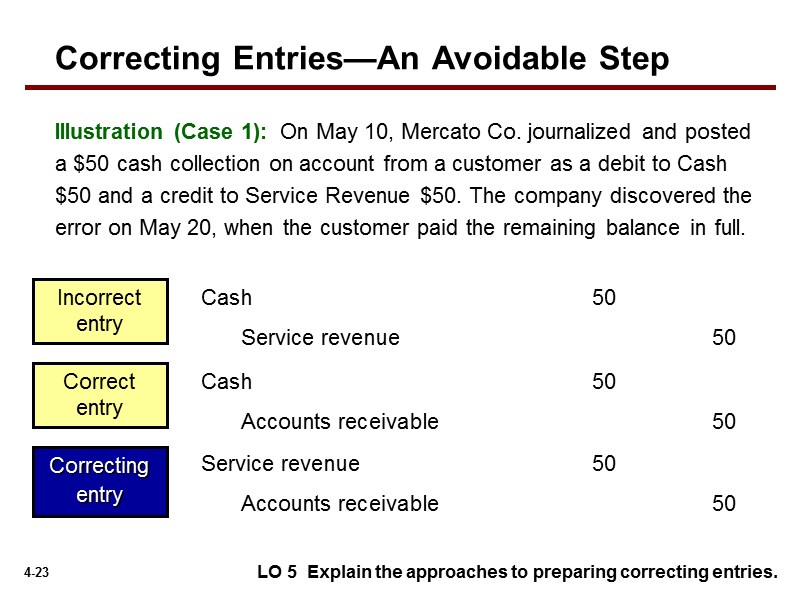
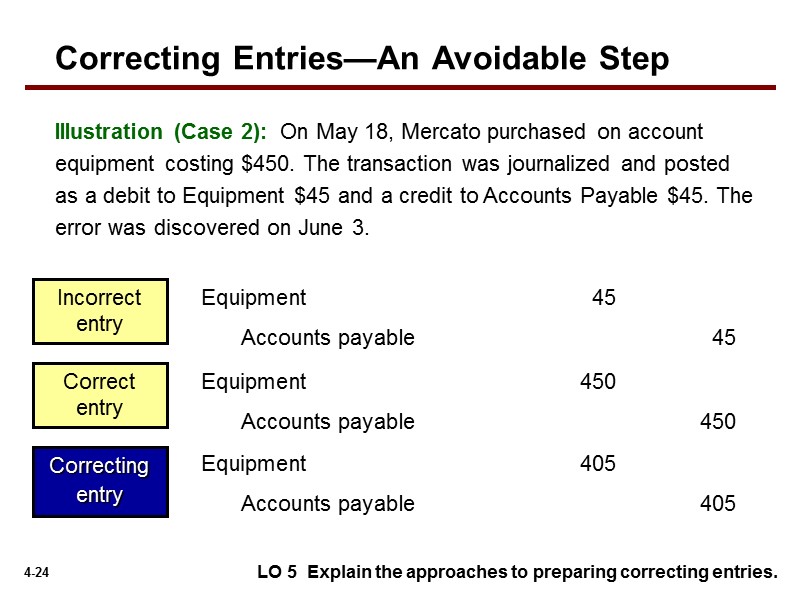
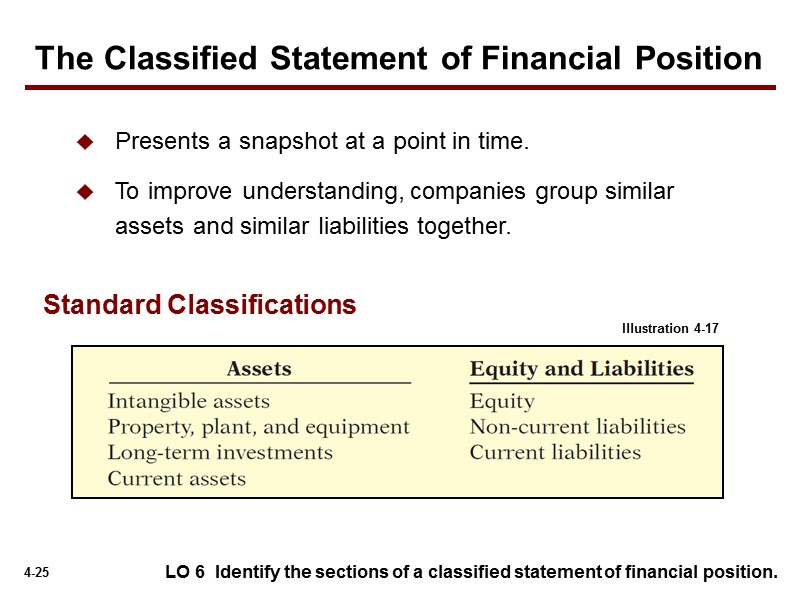
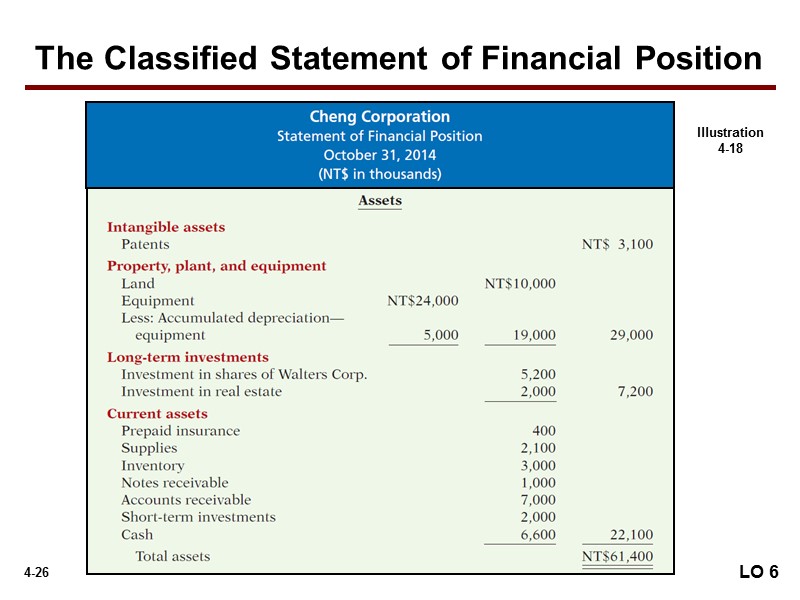
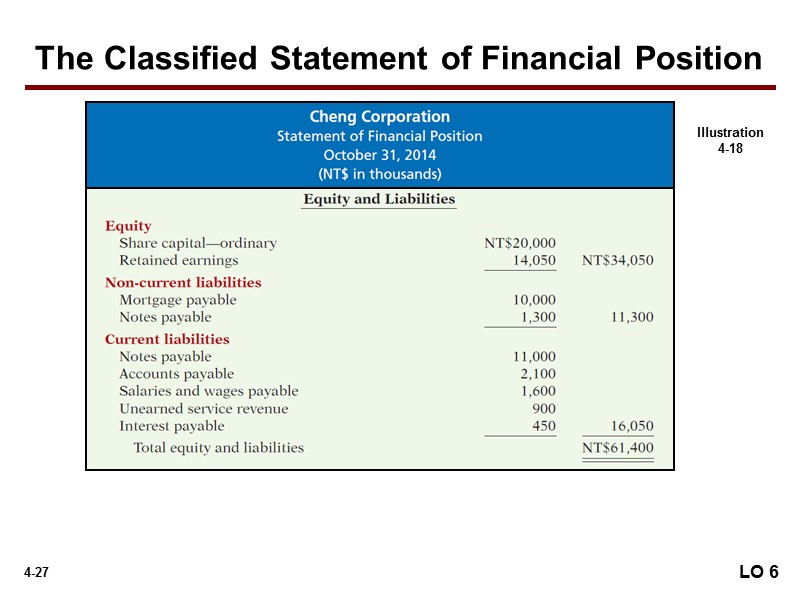
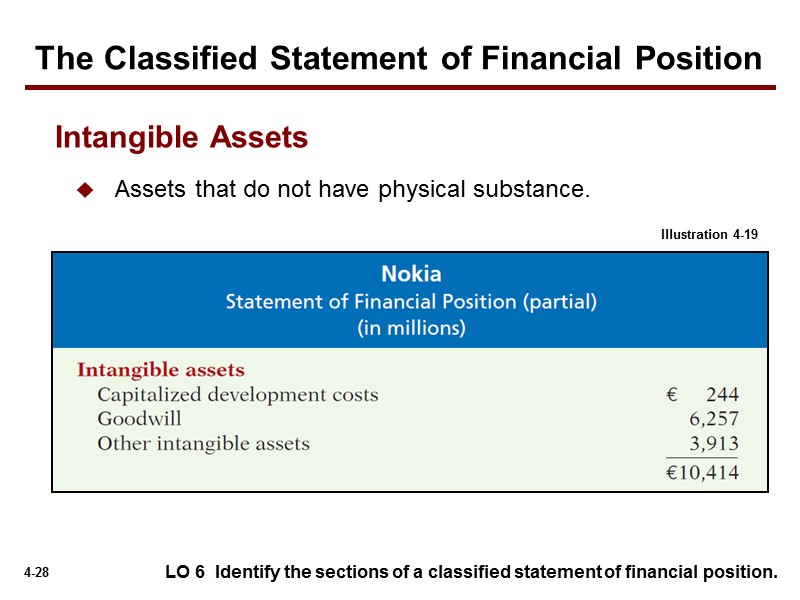

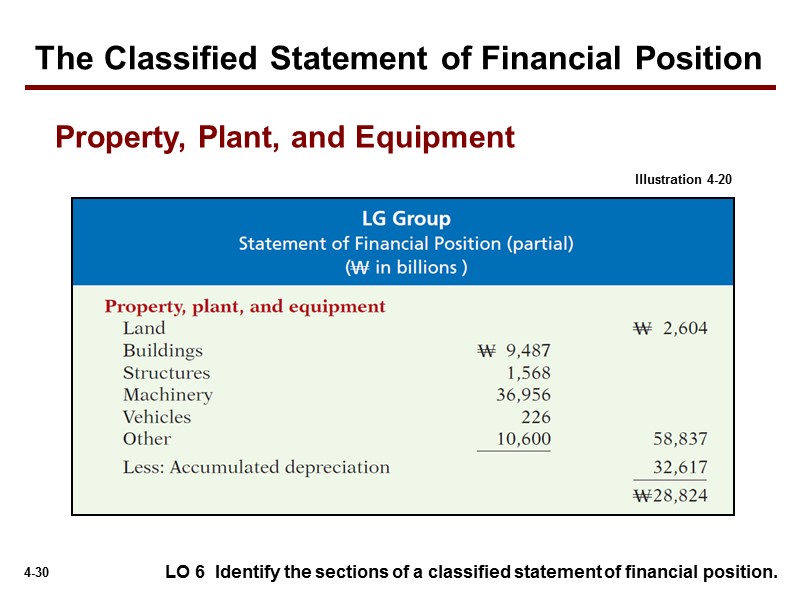
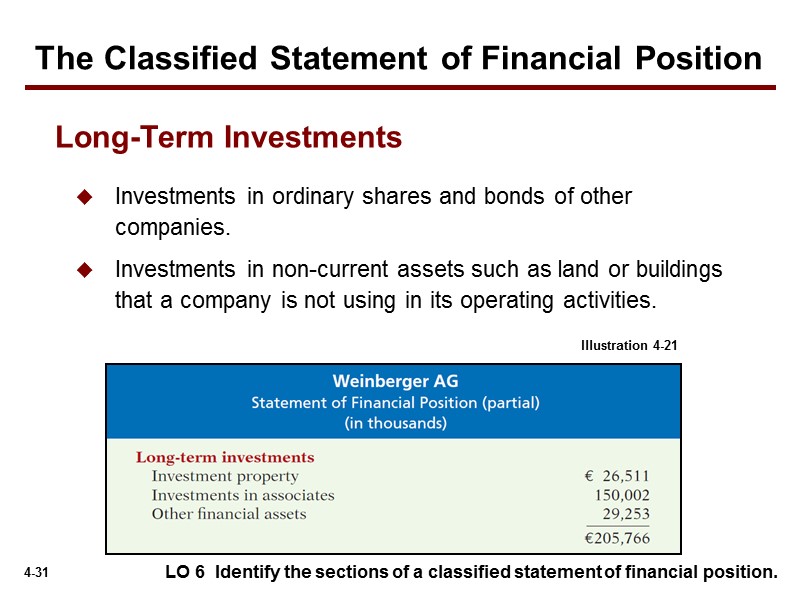
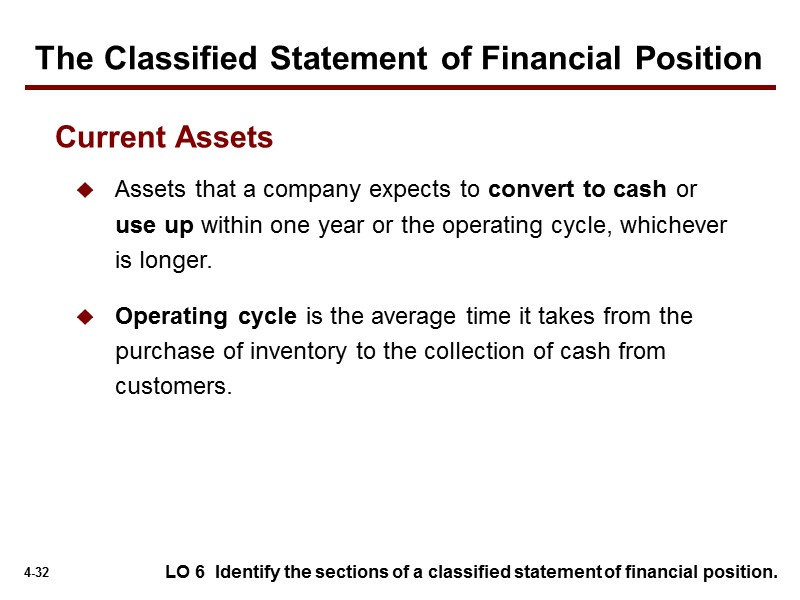
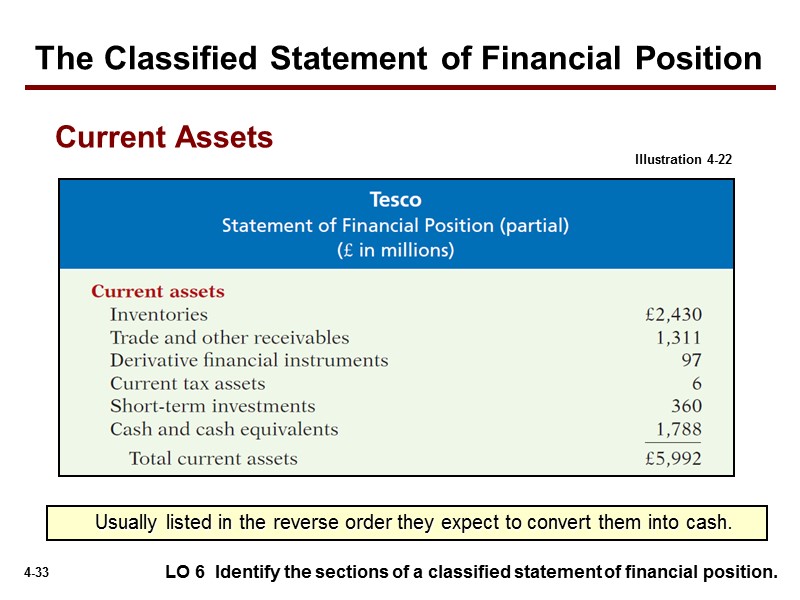
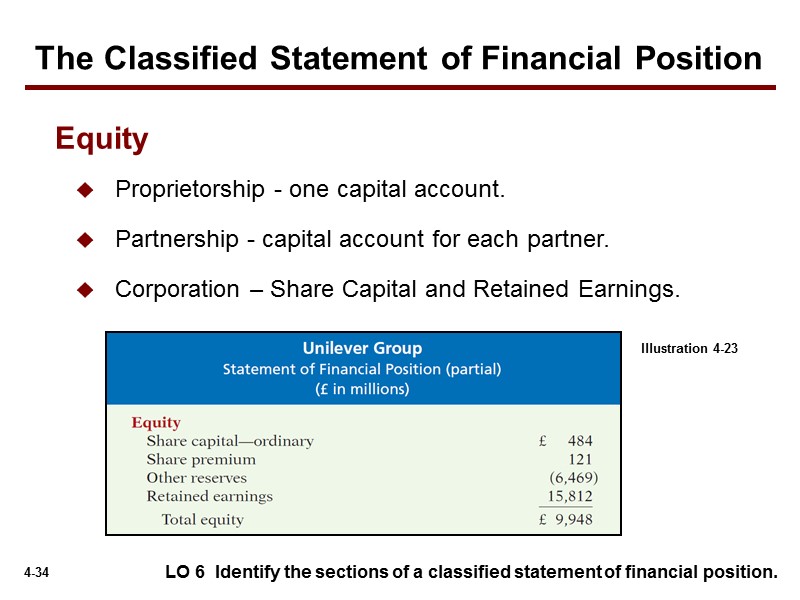
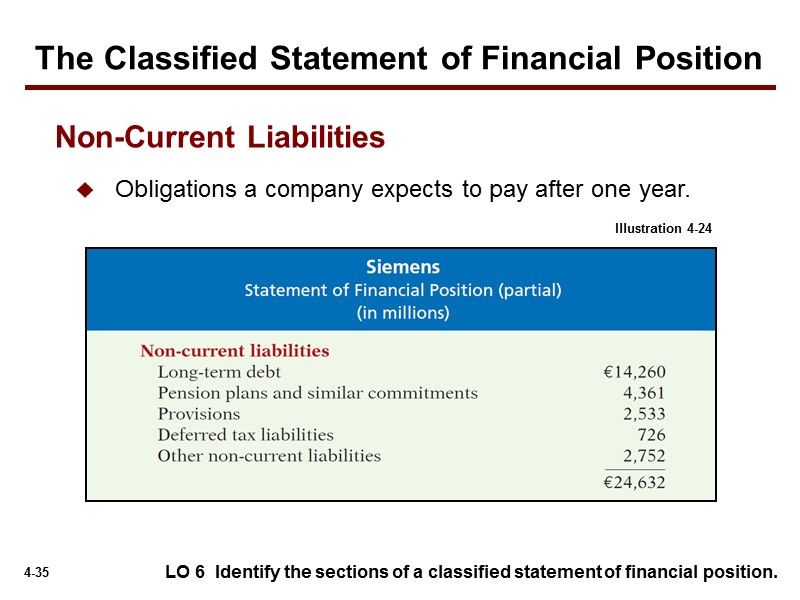
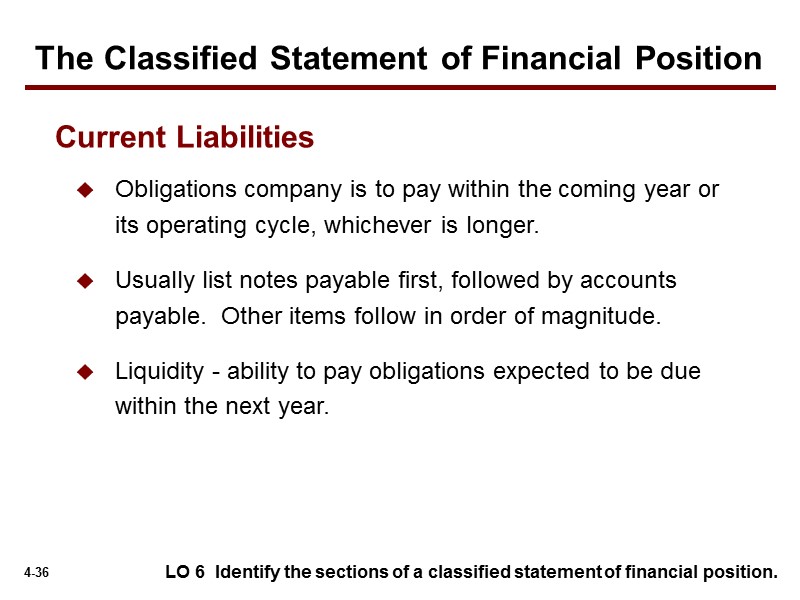
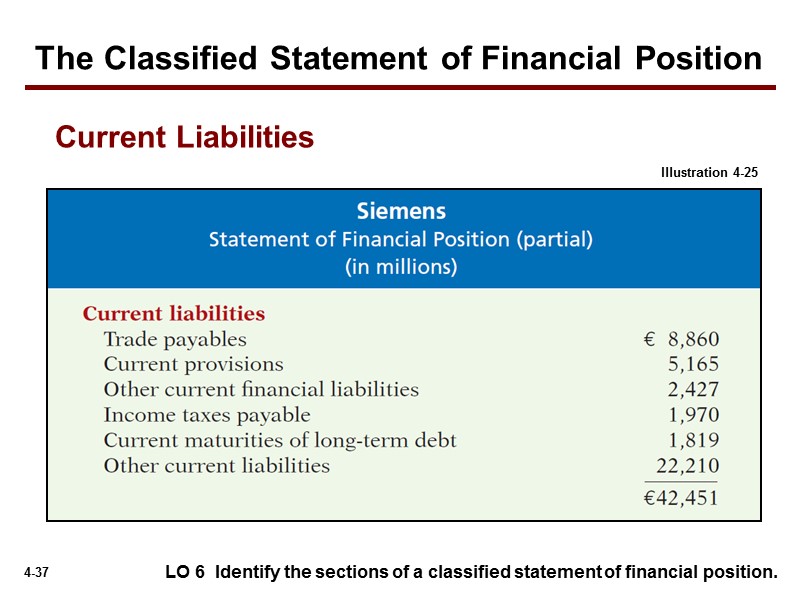
31908-ch04+spring+2014+lje.ppt
- Количество слайдов: 37
 Chapter 4 Completing the Accounting Cycle - Preparation of Financial Statements
Chapter 4 Completing the Accounting Cycle - Preparation of Financial Statements
 Multiple-column form used in preparing financial statements. Not a permanent accounting record. Five step process. Use of worksheet is optional. LO 1 Prepare a worksheet. Preparing a Worksheet Using a Worksheet
Multiple-column form used in preparing financial statements. Not a permanent accounting record. Five step process. Use of worksheet is optional. LO 1 Prepare a worksheet. Preparing a Worksheet Using a Worksheet
 LO 1 Prepare a worksheet. Illustration 4-1 Steps in Preparing a Worksheet
LO 1 Prepare a worksheet. Illustration 4-1 Steps in Preparing a Worksheet
 LO 1 Prepare a worksheet. 1. Prepare a Trial Balance on the Worksheet Trial balance amounts come directly from ledger accounts. Include all accounts with balances. Steps in Preparing a Worksheet Illustration 4-2
LO 1 Prepare a worksheet. 1. Prepare a Trial Balance on the Worksheet Trial balance amounts come directly from ledger accounts. Include all accounts with balances. Steps in Preparing a Worksheet Illustration 4-2
 LO 1 Prepare a worksheet. Illustration 3-23 General journal showing adjusting entries Adjusting Journal Entries (Chapter 3) Steps in Preparing a Worksheet
LO 1 Prepare a worksheet. Illustration 3-23 General journal showing adjusting entries Adjusting Journal Entries (Chapter 3) Steps in Preparing a Worksheet
 LO 1 Prepare a worksheet. 2. Enter the Adjustments in the Adjustments Columns (a) (b) (a) (g) (c) (d) (d) (e) (b) (e) (f) (f) (g) (c) Enter adjustment amounts, total adjustments columns, and check for equality. Add additional accounts as needed. Adjustments Key: (a) Supplies Used. (b) Insurance Expired. (c) Depreciation Expensed. (d) Service Revenue Earned. (e) Service Revenue Accrued. (f) Interest Accrued. (g) Salaries Accrued. Steps in Preparing a Worksheet
LO 1 Prepare a worksheet. 2. Enter the Adjustments in the Adjustments Columns (a) (b) (a) (g) (c) (d) (d) (e) (b) (e) (f) (f) (g) (c) Enter adjustment amounts, total adjustments columns, and check for equality. Add additional accounts as needed. Adjustments Key: (a) Supplies Used. (b) Insurance Expired. (c) Depreciation Expensed. (d) Service Revenue Earned. (e) Service Revenue Accrued. (f) Interest Accrued. (g) Salaries Accrued. Steps in Preparing a Worksheet
 LO 1 Prepare a worksheet. 3. Complete the Adjusted Trial Balance Columns (a) (b) (a) (g) (c) (d) (d) (e) (b) (e) (f) (f) (g) (c) Total the adjusted trial balance columns and check for equality. Steps in Preparing a Worksheet
LO 1 Prepare a worksheet. 3. Complete the Adjusted Trial Balance Columns (a) (b) (a) (g) (c) (d) (d) (e) (b) (e) (f) (f) (g) (c) Total the adjusted trial balance columns and check for equality. Steps in Preparing a Worksheet
 LO 1 Prepare a worksheet. 4. Extend Amounts to Financial Statement Columns (a) (b) (a) (g) (c) (d) (d) (e) (b) (e) (f) (f) (g) (c) Extend all revenue and expense account balances to the income statement columns. Steps in Preparing a Worksheet
LO 1 Prepare a worksheet. 4. Extend Amounts to Financial Statement Columns (a) (b) (a) (g) (c) (d) (d) (e) (b) (e) (f) (f) (g) (c) Extend all revenue and expense account balances to the income statement columns. Steps in Preparing a Worksheet
 LO 1 Prepare a worksheet. (a) (b) (a) (g) (c) (d) (d) (e) (b) (e) (f) (f) (g) (c) Steps in Preparing a Worksheet Compute Net Income or Net Loss. 5. Total Columns, Compute Net Income (Loss)
LO 1 Prepare a worksheet. (a) (b) (a) (g) (c) (d) (d) (e) (b) (e) (f) (f) (g) (c) Steps in Preparing a Worksheet Compute Net Income or Net Loss. 5. Total Columns, Compute Net Income (Loss)
 Income statement is prepared from the income statement columns. Statement of financial position and retained earnings statement are prepared from the statement of financial position columns. Companies journalize and post adjusting entries. LO 1 Prepare a worksheet. Preparing Statements from a Worksheet Using a Worksheet
Income statement is prepared from the income statement columns. Statement of financial position and retained earnings statement are prepared from the statement of financial position columns. Companies journalize and post adjusting entries. LO 1 Prepare a worksheet. Preparing Statements from a Worksheet Using a Worksheet
 LO 1 Prepare a worksheet. Illustration 4-4 Preparing Statements from a Worksheet
LO 1 Prepare a worksheet. Illustration 4-4 Preparing Statements from a Worksheet
 LO 1 Prepare a worksheet. Preparing Statements from a Worksheet Illustration 4-4
LO 1 Prepare a worksheet. Preparing Statements from a Worksheet Illustration 4-4
 LO 1 Preparing Statements from a Worksheet Illustration 4-4
LO 1 Preparing Statements from a Worksheet Illustration 4-4
 Adjusting entries are prepared from the adjustments columns of the worksheet. Journalizing and posting of adjusting entries follows the preparation of financial statements when a worksheet is used. LO 1 Prepare a worksheet. Using a Worksheet Preparing Adjusting Entries from a Worksheet
Adjusting entries are prepared from the adjustments columns of the worksheet. Journalizing and posting of adjusting entries follows the preparation of financial statements when a worksheet is used. LO 1 Prepare a worksheet. Using a Worksheet Preparing Adjusting Entries from a Worksheet
 At the end of the accounting period, the company makes the accounts ready for the next period. LO 2 Explain the process of closing the books. Illustration 4-5 Closing the Books
At the end of the accounting period, the company makes the accounts ready for the next period. LO 2 Explain the process of closing the books. Illustration 4-5 Closing the Books
 Closing entries formally recognize, in the general ledger, the transfer of net income (or net loss) and dividends to retained earnings. LO 2 Explain the process of closing the books. Closing entries are only made at the end of the annual accounting period. Closing the Books Preparing Closing Entries
Closing entries formally recognize, in the general ledger, the transfer of net income (or net loss) and dividends to retained earnings. LO 2 Explain the process of closing the books. Closing entries are only made at the end of the annual accounting period. Closing the Books Preparing Closing Entries
 LO 2 Illustration 4-6 Retained earnings is a permanent account; all other accounts are temporary accounts. Dividends are closed directly to retained earnings and not to Income Summary because dividends are not an expense. Note: Closing the Books
LO 2 Illustration 4-6 Retained earnings is a permanent account; all other accounts are temporary accounts. Dividends are closed directly to retained earnings and not to Income Summary because dividends are not an expense. Note: Closing the Books
 Closing Entries Illustrated Illustration 4-7 Closing entries journalized Closing the Books
Closing Entries Illustrated Illustration 4-7 Closing entries journalized Closing the Books
 Posting Closing Entries Closing the Books Illustration 4-8 LO 2
Posting Closing Entries Closing the Books Illustration 4-8 LO 2
 Purpose is to prove the equality of the permanent account balances after journalizing and posting of closing entries. Preparing a Post-Closing Trial Balance Illustration 4-9 LO 3
Purpose is to prove the equality of the permanent account balances after journalizing and posting of closing entries. Preparing a Post-Closing Trial Balance Illustration 4-9 LO 3
 1. Analyze business transactions 2. Journalize the transactions 6. Prepare an adjusted trial balance 7. Prepare financial statements 8. Journalize and post closing entries 9. Prepare a post-closing trial balance 4. Prepare a trial balance 3. Post to ledger accounts 5. Journalize and post adjusting entries Illustration 4-12 LO 4 State the required steps in the accounting cycle. Summary of the Accounting Cycle
1. Analyze business transactions 2. Journalize the transactions 6. Prepare an adjusted trial balance 7. Prepare financial statements 8. Journalize and post closing entries 9. Prepare a post-closing trial balance 4. Prepare a trial balance 3. Post to ledger accounts 5. Journalize and post adjusting entries Illustration 4-12 LO 4 State the required steps in the accounting cycle. Summary of the Accounting Cycle
 Unnecessary if the records are error-free. Made whenever an error is discovered. Must be posted before closing entries. LO 5 Explain the approaches to preparing correcting entries. Summary of the Accounting Cycle Correcting Entries—An Avoidable Step Instead of preparing a correcting entry, it is possible to reverse the incorrect entry and then prepare the correct entry.
Unnecessary if the records are error-free. Made whenever an error is discovered. Must be posted before closing entries. LO 5 Explain the approaches to preparing correcting entries. Summary of the Accounting Cycle Correcting Entries—An Avoidable Step Instead of preparing a correcting entry, it is possible to reverse the incorrect entry and then prepare the correct entry.
 Illustration (Case 1): On May 10, Mercato Co. journalized and posted a $50 cash collection on account from a customer as a debit to Cash $50 and a credit to Service Revenue $50. The company discovered the error on May 20, when the customer paid the remaining balance in full. LO 5 Explain the approaches to preparing correcting entries. Cash 50 Incorrect entry Service revenue 50 Cash 50 Correct entry Accounts receivable 50 Service revenue 50 Correcting entry Accounts receivable 50 Correcting Entries—An Avoidable Step
Illustration (Case 1): On May 10, Mercato Co. journalized and posted a $50 cash collection on account from a customer as a debit to Cash $50 and a credit to Service Revenue $50. The company discovered the error on May 20, when the customer paid the remaining balance in full. LO 5 Explain the approaches to preparing correcting entries. Cash 50 Incorrect entry Service revenue 50 Cash 50 Correct entry Accounts receivable 50 Service revenue 50 Correcting entry Accounts receivable 50 Correcting Entries—An Avoidable Step
 Illustration (Case 2): On May 18, Mercato purchased on account equipment costing $450. The transaction was journalized and posted as a debit to Equipment $45 and a credit to Accounts Payable $45. The error was discovered on June 3. LO 5 Explain the approaches to preparing correcting entries. Correcting Entries—An Avoidable Step Equipment 45 Incorrect entry Accounts payable 45 Equipment 450 Correct entry Accounts payable 450 Equipment 405 Correcting entry Accounts payable 405
Illustration (Case 2): On May 18, Mercato purchased on account equipment costing $450. The transaction was journalized and posted as a debit to Equipment $45 and a credit to Accounts Payable $45. The error was discovered on June 3. LO 5 Explain the approaches to preparing correcting entries. Correcting Entries—An Avoidable Step Equipment 45 Incorrect entry Accounts payable 45 Equipment 450 Correct entry Accounts payable 450 Equipment 405 Correcting entry Accounts payable 405
 LO 6 Identify the sections of a classified statement of financial position. Presents a snapshot at a point in time. To improve understanding, companies group similar assets and similar liabilities together. Illustration 4-17 Standard Classifications The Classified Statement of Financial Position
LO 6 Identify the sections of a classified statement of financial position. Presents a snapshot at a point in time. To improve understanding, companies group similar assets and similar liabilities together. Illustration 4-17 Standard Classifications The Classified Statement of Financial Position
 LO 6 Illustration 4-18 The Classified Statement of Financial Position
LO 6 Illustration 4-18 The Classified Statement of Financial Position
 LO 6 The Classified Statement of Financial Position Illustration 4-18
LO 6 The Classified Statement of Financial Position Illustration 4-18
 LO 6 Identify the sections of a classified statement of financial position. Assets that do not have physical substance. Intangible Assets Illustration 4-19 The Classified Statement of Financial Position
LO 6 Identify the sections of a classified statement of financial position. Assets that do not have physical substance. Intangible Assets Illustration 4-19 The Classified Statement of Financial Position
 LO 6 Identify the sections of a classified statement of financial position. Long useful lives. Currently used in operations. Depreciation - allocating the cost of assets to a number of years. Accumulated depreciation - total amount of depreciation expensed thus far in the asset’s life. Property, Plant, and Equipment The Classified Statement of Financial Position
LO 6 Identify the sections of a classified statement of financial position. Long useful lives. Currently used in operations. Depreciation - allocating the cost of assets to a number of years. Accumulated depreciation - total amount of depreciation expensed thus far in the asset’s life. Property, Plant, and Equipment The Classified Statement of Financial Position
 LO 6 Identify the sections of a classified statement of financial position. Property, Plant, and Equipment Illustration 4-20 The Classified Statement of Financial Position
LO 6 Identify the sections of a classified statement of financial position. Property, Plant, and Equipment Illustration 4-20 The Classified Statement of Financial Position
 LO 6 Identify the sections of a classified statement of financial position. Investments in ordinary shares and bonds of other companies. Investments in non-current assets such as land or buildings that a company is not using in its operating activities. Long-Term Investments Illustration 4-21 The Classified Statement of Financial Position
LO 6 Identify the sections of a classified statement of financial position. Investments in ordinary shares and bonds of other companies. Investments in non-current assets such as land or buildings that a company is not using in its operating activities. Long-Term Investments Illustration 4-21 The Classified Statement of Financial Position
 LO 6 Identify the sections of a classified statement of financial position. Assets that a company expects to convert to cash or use up within one year or the operating cycle, whichever is longer. Operating cycle is the average time it takes from the purchase of inventory to the collection of cash from customers. Current Assets The Classified Statement of Financial Position
LO 6 Identify the sections of a classified statement of financial position. Assets that a company expects to convert to cash or use up within one year or the operating cycle, whichever is longer. Operating cycle is the average time it takes from the purchase of inventory to the collection of cash from customers. Current Assets The Classified Statement of Financial Position
 LO 6 Identify the sections of a classified statement of financial position. Usually listed in the reverse order they expect to convert them into cash. Current Assets Illustration 4-22 The Classified Statement of Financial Position
LO 6 Identify the sections of a classified statement of financial position. Usually listed in the reverse order they expect to convert them into cash. Current Assets Illustration 4-22 The Classified Statement of Financial Position
 LO 6 Identify the sections of a classified statement of financial position. Proprietorship - one capital account. Partnership - capital account for each partner. Corporation – Share Capital and Retained Earnings. Equity Illustration 4-23 The Classified Statement of Financial Position
LO 6 Identify the sections of a classified statement of financial position. Proprietorship - one capital account. Partnership - capital account for each partner. Corporation – Share Capital and Retained Earnings. Equity Illustration 4-23 The Classified Statement of Financial Position
 LO 6 Identify the sections of a classified statement of financial position. Obligations a company expects to pay after one year. Non-Current Liabilities Illustration 4-24 The Classified Statement of Financial Position
LO 6 Identify the sections of a classified statement of financial position. Obligations a company expects to pay after one year. Non-Current Liabilities Illustration 4-24 The Classified Statement of Financial Position
 LO 6 Identify the sections of a classified statement of financial position. Obligations company is to pay within the coming year or its operating cycle, whichever is longer. Usually list notes payable first, followed by accounts payable. Other items follow in order of magnitude. Liquidity - ability to pay obligations expected to be due within the next year. Current Liabilities The Classified Statement of Financial Position
LO 6 Identify the sections of a classified statement of financial position. Obligations company is to pay within the coming year or its operating cycle, whichever is longer. Usually list notes payable first, followed by accounts payable. Other items follow in order of magnitude. Liquidity - ability to pay obligations expected to be due within the next year. Current Liabilities The Classified Statement of Financial Position
 LO 6 Identify the sections of a classified statement of financial position. Illustration 4-25 Current Liabilities The Classified Statement of Financial Position
LO 6 Identify the sections of a classified statement of financial position. Illustration 4-25 Current Liabilities The Classified Statement of Financial Position

